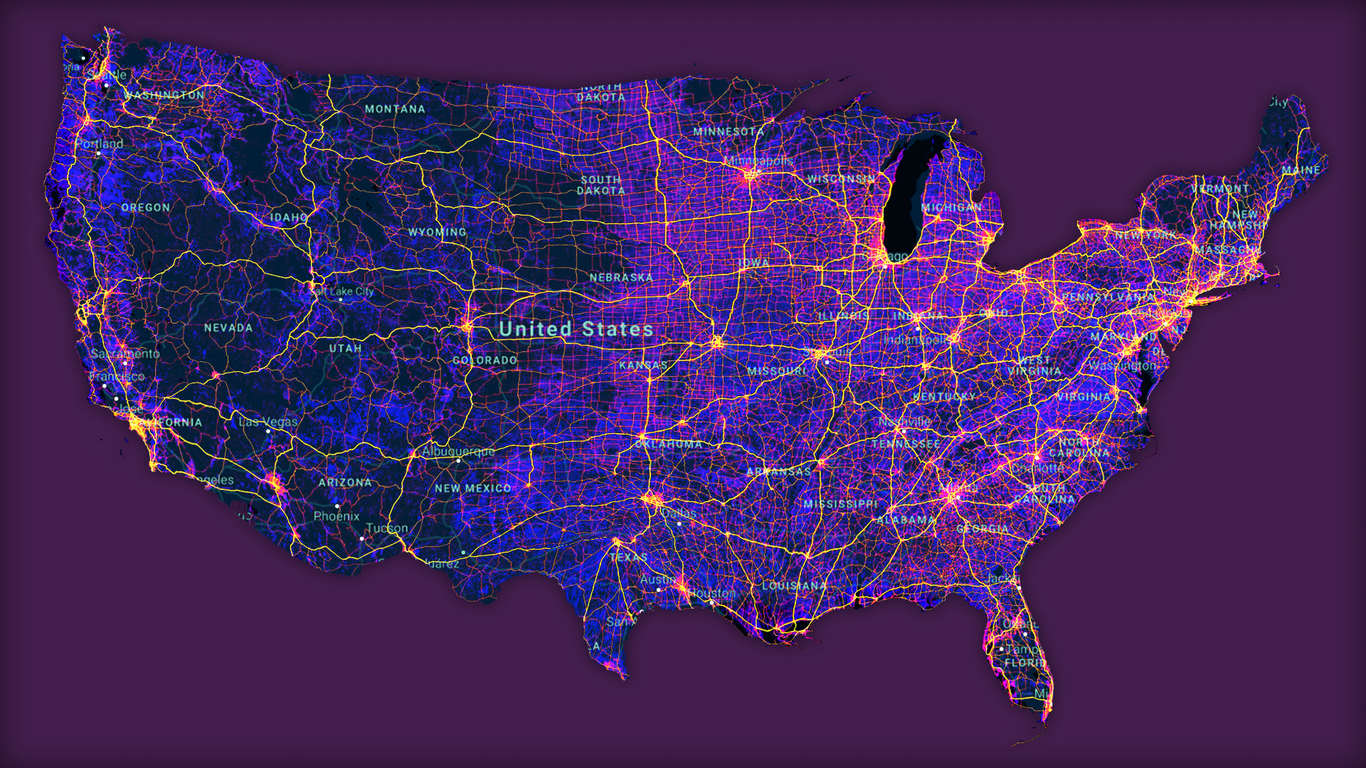What the Largest Infrastructure Bill in History Means for Trucking

November 6, 2021: Congress passed the Infrastructure and Jobs Act to bolster the nation’s infrastructure and stay competitive in the coming decade and beyond. This infrastructure bill is unique and is described as a “once-in-a-generation” event that finally addresses the long overdue need for infrastructure development. The Act includes more than $1 trillion in transportation spending from 2022 to 2031.
This deal isn’t just about rebuilding roads, rails, and bridges – but also about ensuring access to high speed internet, clean drinking water, and new and improved climate crisis measures. Despite its real impact on the national deficit, the legislation hopes to ease inflation and strengthen supply chains across the country for a better economic future overall.
What does this historic deal mean for CDL drivers and the trucking industry as a whole? Let’s find out.
Creating 1.5 million jobs per year for the next 10 years
The legislation will help drive the creation of union jobs to help sustain and strengthen the economy. All of the projects outlined in the legislation will create 1,500,000 new jobs annually to carry out and implement the ambitious plans laid out in the Deal. Though not all of these jobs will be CDL driving jobs, a lot more truck drivers will be needed to meet the demands of the proposed projects.
Rebuilding and repairing roads nationwide
According to the information provided on The White House website, 20% of all US roads and highways are in poor condition and over 45,000 bridges nationwide need repair.
In fact, this task is so monumental that it has become the largest investment into the repair and reconstruction of roads and bridges since the construction of the interstate highway system, which began with the passage of the Federal Aid Highway Act of 1921.
Upgrading ports to strengthen the supply chain
Ports and airports have remained neglected for decades. This neglect has reached a tipping point during the last year in the form of unprecedented backlogs at major ports across the country. With the economy recovering after the pandemic and a sudden increase in demand for foreign goods, ports found themselves unable to keep up.
Disruptions in the supply chain have directly contributed to the recent rates of record inflation. Investment into this sector would mitigate not only future effects of inflation but also keep America competitive and increase the number of jobs available at these hubs. That’s the best case scenario, in any case.
This legislation will invest $17 billion into port infrastructure and waterways and $25 billion into airports. Having stronger and modernized ports and airports will strengthen the supply chain and remove bottlenecks that, among many other things, make the daily lives of truck drivers servicing those ports difficult.
Temporary deficit, long term gain?
The Congressional Budget Office estimated that over the next decade would add $256 billion to projected deficits for that period. However, the decision to go further into a deficit is only justified by the promise of stronger economic growth going forward.
As infrastructure spending increases, more employment and tax revenues are generated and government spending on income support and unemployment are reduced. The infrastructure investment is considered a “large multiplier” in proportion to the GDP increase per dollar spent in investment. It is one of the highest potential returns on investment compared to other forms of federal government spending policy.

Macroeconomic analysis of the bill conducted by Moody’s Analytics suggests that even though there is concern for inflation, it is largely overblown. The fiscal support from the government should ensure a healthier functioning of the economy and a return to full employment after the effects caused by the pandemic.
This could mean more money and better conditions for drivers
Long term economic research suggests that improving infrastructure will contribute to significant increases in GDP and employment.
Better infrastructure and roads would mean less productivity loss and a lower business cost as a result. The increase in productivity will allow more competition in the trucking industry, improve labor participation and reduce commute and travel times.
The impacts on productivity and lower cost of business could create a push for new, exciting employment opportunities within the trucking industry. As company costs go down and competition increases, trucking companies may be in a better position to allocate funds towards better wages and working conditions in an effort to recruit and retain drivers.
Who is paying for it?
Currently, there are proposals by lawmakers to increase taxes on multinational companies and what Moody’s Analytics describes as “well-to-do individuals”. Exactly how rich you have to be to be considered a “well-to-do individual” remains undefined. Currently, a 1% stock buyback tax has been proposed. Each year, companies buy back stock to pay out profits to shareholders – tax buyback has become increasingly popular at publicly traded companies and is projected to total $800 billion. Take 1% of that and you get $8 billion annually to help the government to compensate for this bill.
According to the analysis published by Moody’s, the tax implications for the “common man” seem nonexistent. In fact, massive packages for social spending and tax breaks for the lower and middle income households are being put into motion.If the proposed legislation becomes law as it is currently outlined, it should primarily benefit and strengthen the lower and middle class in America.
It’s still uncertain
Many people might be under the impression that this Act is in motion and set in stone. This is not yet the case. The package includes a diverse range of spending and tax initiatives, many of which are early in concept. Implementing the legislation as intended isn’t a matter of signing a paper, but an ongoing process that will require competent governance to implement as outlined.